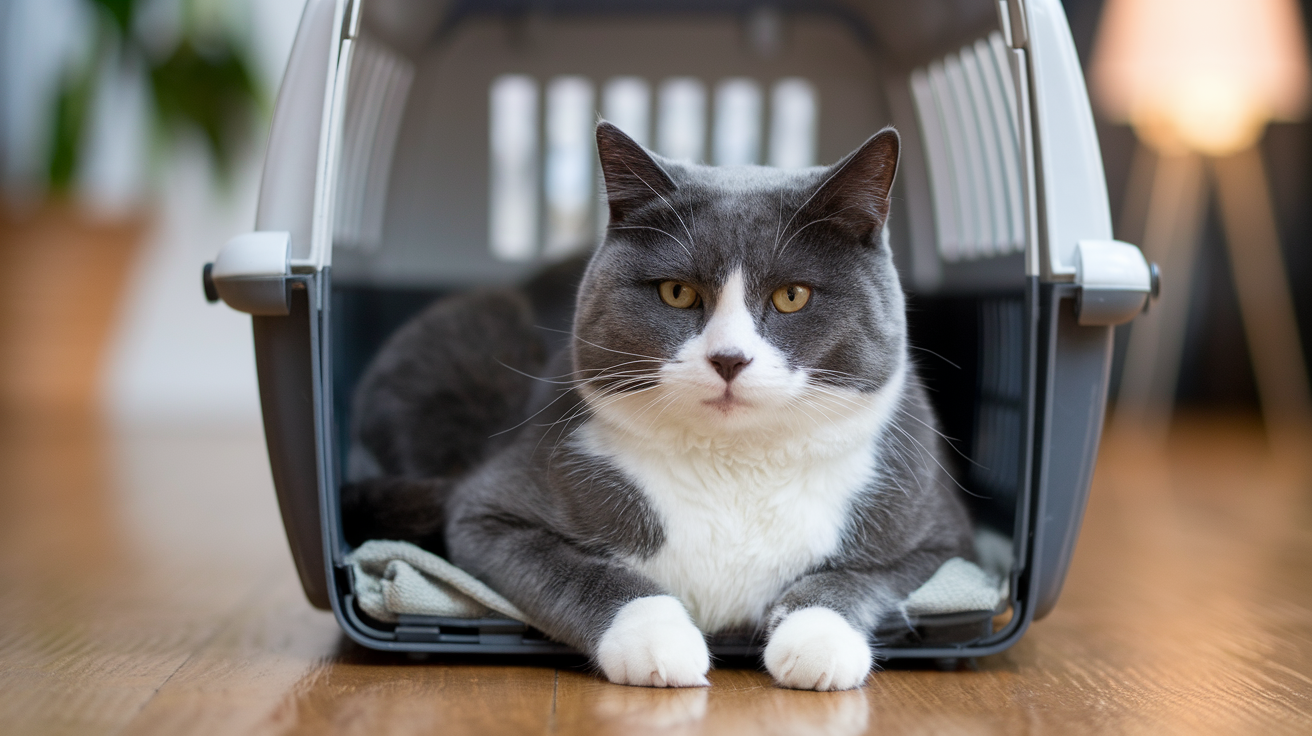Introduction
The gentle purr of your feline companion is a comforting sound at home, but when it’s time to hit the road, that purr can quickly turn into a stressed meow. Whether you’re heading to the vet, taking a road trip, or flying across the country, having the right cat carrier can make all the difference between a smooth journey and a stressful ordeal—for both you and your furry friend.
I still remember the first time I tried to transport my cat Milo in an old carrier I borrowed from a friend. The flimsy construction, inadequate ventilation, and awkward carrying handle turned what should have been a simple vet visit into a minor catastrophe. Milo was stressed, I was frustrated, and we both arrived at the vet’s office frazzled and unhappy.
That experience taught me an important lesson: investing in a quality cat carrier isn’t just a convenience—it’s essential for your cat’s safety, comfort, and well-being during travel. But with countless options available, how do you choose the right one?
In this comprehensive guide, we’ll explore everything you need to know about selecting the perfect cat carrier for your travel needs. From size considerations to material options, essential features to look for, and tips for getting your cat accustomed to their new travel home, we’ve got you covered. Let’s dive in and find the purr-fect carrier solution for your feline friend!
Understanding Your Cat’s Carrier Needs
Before diving into specific products, let’s consider what makes a carrier suitable for your unique feline friend. Each cat has different requirements based on their size, temperament, and the type of travel you’ll be doing.
Size Matters: Finding the Right Fit
When it comes to cat carriers, one size definitely does not fit all. A carrier that’s too small will make your cat feel cramped and anxious, while one that’s too large might not provide the sense of security many cats need during travel.
The ideal carrier should allow your cat to:
- Stand up and turn around comfortably
- Lie down in a natural position
- Sit upright without their head touching the top
For most average-sized domestic cats (8-10 pounds), a carrier measuring approximately 18-19 inches long, 12-13 inches wide, and 10-11 inches high will work well. However, if you have a larger breed like a Maine Coon or a Ragdoll, you’ll need to size up accordingly.
I once made the mistake of buying a carrier that was technically “cat-sized” but didn’t account for my larger-than-average tabby. The result? A stressed cat who couldn’t get comfortable during our two-hour drive. Learn from my mistake: measure your cat before purchasing a carrier!
Hard-Sided vs. Soft-Sided Carriers: The Great Debate
Both hard-sided and soft-sided carriers have their advantages, and your choice should depend on your specific needs and your cat’s preferences.
Hard-Sided Carriers offer:
- Superior protection and durability
- Better structural integrity
- Easier cleaning (important after accidents)
- More stability during travel
- Better protection from other animals or crushing
Soft-Sided Carriers provide:
- Lightweight design that’s easier to carry
- More comfort with padded interiors
- Flexibility to fit under airplane seats
- Collapsibility for easy storage
- Often more design options and styles
For nervous cats who might try to escape, a hard-sided carrier with secure latches is typically the safer option. For calm cats and short trips, the comfort of a soft-sided carrier might be preferable.
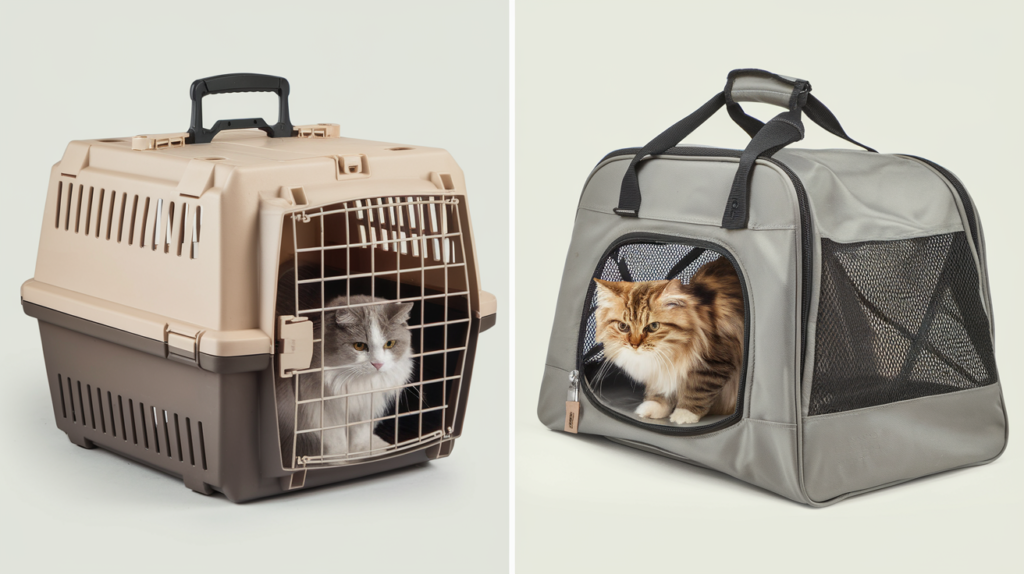
Travel Type: What’s Your Destination?
Your travel plans should heavily influence your carrier choice:
For Car Travel:
Both hard and soft carriers work well, but ensure the carrier can be secured with a seatbelt. Hard carriers tend to offer more protection in case of sudden stops or accidents.
For Air Travel:
Airlines have specific requirements for pet carriers. Most require:
- Proper ventilation on at least three sides
- Waterproof bottom
- Secure door latches
- Dimensions that fit under the seat in front of you (for cabin travel)
Always check with your specific airline before purchasing a carrier for air travel, as requirements can vary.
For Vet Visits:
Consider a carrier with easy access from both top and front. This allows veterinarians to sometimes examine your cat without fully removing them from their safe space.
Top Features to Look for in a Quality Cat Carrier
When shopping for a cat carrier, certain features can significantly enhance your and your cat’s travel experience. Here’s what to look for:
1. Multiple Entry Points
Carriers with both top and side openings offer tremendous advantages. Top-loading carriers make it much easier to place reluctant cats inside, while side entries are convenient for cats who might walk in willingly.
2. Proper Ventilation
Adequate airflow is non-negotiable. Look for carriers with mesh panels or ventilation holes on multiple sides to ensure your cat gets plenty of fresh air, especially during warmer weather.
3. Secure Closures
Escape-artist cats require extra-secure latches or zippers. For hard carriers, metal latches tend to be more secure than plastic ones. For soft carriers, look for heavy-duty zippers, preferably with locking features.
4. Comfortable Interior
A soft, removable pad or blanket will make the journey more comfortable for your cat. Washable liners are especially valuable for easy cleaning after accidents.
5. Sturdy Carrying Options
Look for carriers with ergonomic handles and/or padded shoulder straps. Your comfort matters too, especially if you’ll be carrying your cat for extended periods.
6. Collapsibility (When Appropriate)
Foldable carriers can be incredibly convenient for storage when not in use. However, ensure that when assembled, they’re just as sturdy and secure as their non-collapsible counterparts.
7. Ease of Cleaning
Travel can be messy. Carriers with removable, washable components or non-porous surfaces that can be easily wiped down will save you headaches later.
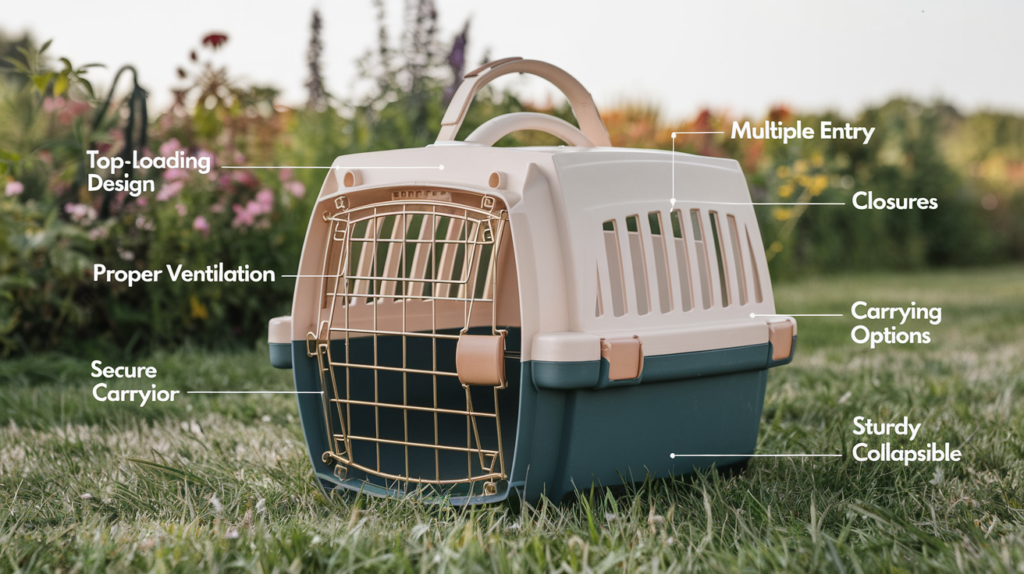
Best Cat Carriers for Different Travel Scenarios
Let’s explore some top-recommended carriers for various travel needs and cat types:
Best Overall Hard-Sided Carriers
Petmate Two-Door Top-Load Pet Kennel
With its rigid structure, dual access points, and eco-friendly construction made from recycled materials, this carrier offers exceptional durability and functionality. The top-loading feature is particularly valuable for cats who resist entering through the front door.
AmazonBasics Two-Door Top-Load Hard-Sided Carrier
This affordable option doesn’t compromise on quality, offering excellent ventilation, dual-door access, and a durable design that stands up to regular use. The secure latches provide peace of mind for owners of escape-prone cats.
Best Soft-Sided Carriers for Comfort
Sherpa Original Deluxe Pet Carrier
A long-standing favorite among cat owners, this airline-approved soft carrier features mesh panels for ventilation, padded shoulder straps for comfort, and a design that’s been tested and approved by many major airlines.
Mr. Peanut’s Gold Series Airline-Approved Soft-Sided Pet Carrier
Premium construction with reinforced stitching and a plush interior makes this carrier a comfortable option for cats who appreciate a softer travel environment. The lockable zippers add an extra layer of security.
Best for Air Travel
Sleepypod Air Cat Carrier
Specifically designed for air travel, this carrier can compress to fit under airline seats while still providing ample room for your cat during the rest of your journey. The zippered pockets for paperwork and plush interior make it particularly travel-friendly.
EliteField Soft-Sided Airline-Approved Carrier
With its spacious interior, multiple mesh panels, and airline-compliant design, this carrier makes flying with your feline friend as stress-free as possible. The included fleece bed adds extra comfort for nervous travelers.
Best for Large Cats
Petseek Extra Large Cat Carrier
Spacious dimensions, lockable zippers, and a washable floor cover make this soft-sided carrier an excellent choice for larger cats like Maine Coons or Norwegian Forest Cats. The reinforced structure maintains its shape even with heavier cats.
Frisco Plastic Dog & Cat Kennel
Don’t let the name fool you—this sturdy carrier with metal doors works wonderfully for larger cats, offering the space and security they need without compromising on ventilation or visibility.
Best for Anxious Cats
Lollimeow Bubble Backpack Carrier
The unique bubble window design allows anxious cats to see their surroundings while remaining safely enclosed. This can reduce stress for cats who become more anxious when they can’t see what’s happening around them.
Soft-Sided Cat Carrier with Covered Sides
Some anxious cats prefer less visibility. Carriers with partially covered sides allow your cat to hide while still having adequate ventilation.
Most Innovative Designs
Petsfit Expandable Soft-Sided Carrier
For longer journeys, expandable carriers with sides that zip out to create extra space can be game-changers. They allow your cat to stretch out during layovers or hotel stays while maintaining a secure environment.
Pet Gear I-GO2 Traveler Roller Backpack Carrier
This multi-functional carrier transforms from backpack to roller bag with a telescoping handle, offering versatility for different travel situations and reducing carrier fatigue on longer journeys.
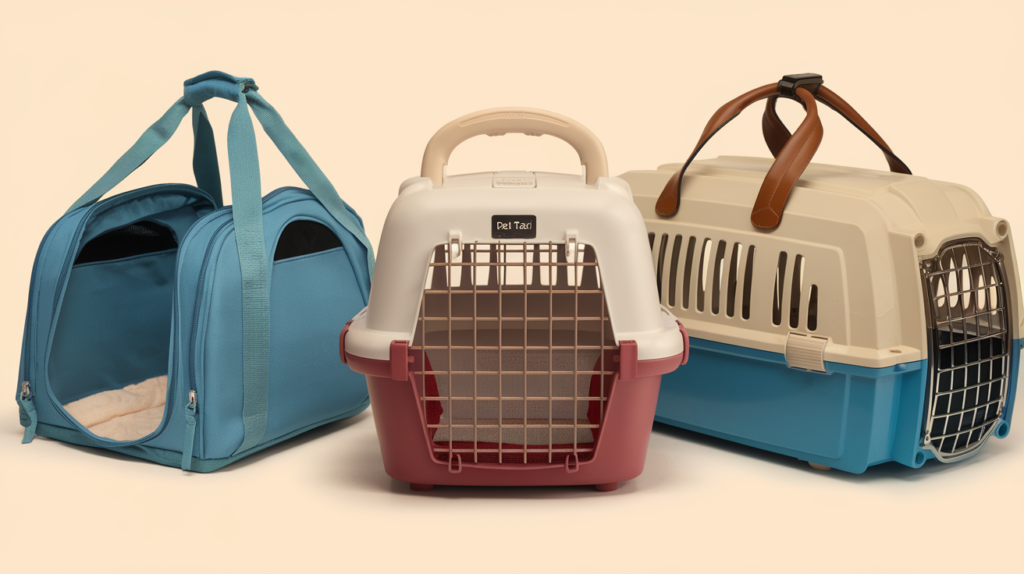
How to Introduce Your Cat to Their New Carrier
Even the best carrier won’t help if your cat refuses to get inside it. Here are some strategies to help your cat become comfortable with their travel home:
1. Start Early and Go Slowly
Begin the introduction process well before your planned travel date. Leave the carrier open in a common area where your cat spends time. This allows them to investigate it on their own terms without pressure.
2. Create Positive Associations
Place treats, catnip, or favorite toys inside the carrier to entice your cat to explore. You can even feed meals near or inside the carrier to build positive associations.
3. Gradual Conditioning
Once your cat is comfortable entering the carrier, practice short sessions with the door closed. Start with just a few seconds and gradually increase the time, always rewarding with treats and praise.
4. Practice Movements
Before actual travel, practice picking up and carrying the carrier around your home, then progress to short car rides. This helps your cat adjust to the sensation of movement while in the carrier.
5. Use Calming Aids When Necessary
For particularly anxious cats, consider using feline pheromone sprays designed to reduce stress. Spray these on a towel inside the carrier 15-30 minutes before travel (not directly on your cat).
I’ve found that patience is key here. My cat initially hated her new carrier, but after two weeks of leaving it out with treats inside, she began voluntarily napping in it! Now getting her inside for vet visits is much less stressful for both of us.
Practical Travel Tips for Cat Owners
Once you’ve selected the perfect carrier and familiarized your cat with it, these travel tips will help ensure a smooth journey:
Secure the Carrier Properly
In vehicles, place the carrier on the floor behind the front passenger seat when possible, or secure it with a seatbelt. Never leave a carrier unsecured where it could move or fall during transport.
Prepare for Accidents
Line the carrier with absorbent, disposable pads in case of accidents during travel. Bring cleaning supplies and extra liners for longer journeys.
Consider Your Cat’s Comfort
For longer trips, ensure your cat has access to water. Special no-spill water containers that attach to the carrier door are available. However, it’s generally best to withhold food for several hours before travel to prevent motion sickness.
Label Everything
Attach secure identification to the carrier with your contact information and your cat’s name. For air travel, also include your destination address and a contact at that location.
Plan for Breaks
On road trips longer than a few hours, plan stops where you can give your cat a break from motion. Keep the carrier closed but offer water and comforting words.
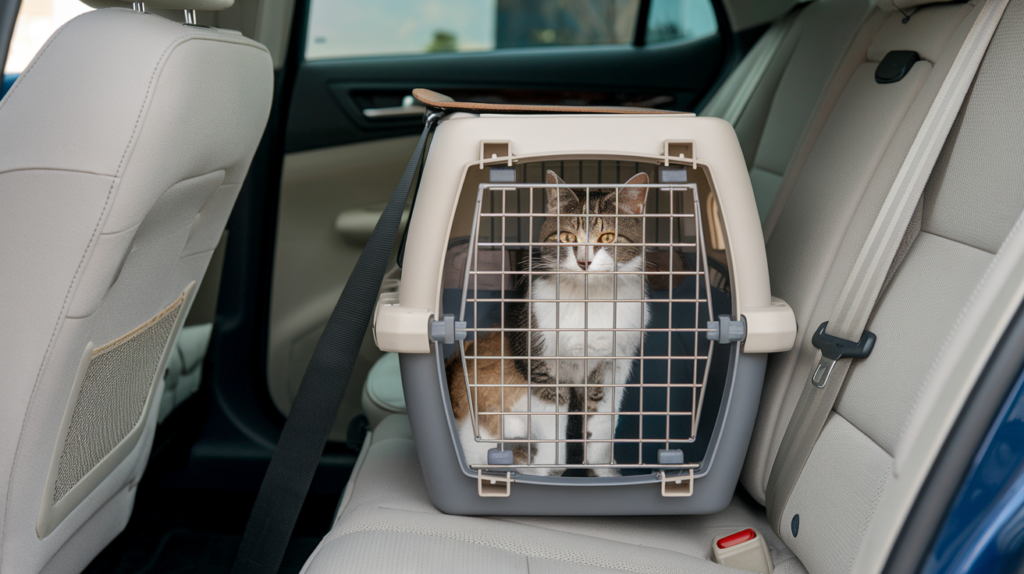
Cleaning and Maintaining Your Cat Carrier
To keep your carrier in top condition and ready for the next adventure:
After Each Use
- Remove and wash any fabric liners or pads according to manufacturer instructions
- Wipe down hard surfaces with pet-safe disinfectant
- Allow the carrier to air dry completely before storing
Regular Maintenance
- Check latches, zippers, and seams for wear or damage
- Replace any worn components before they fail
- For soft carriers, reinforce stitching at the first sign of fraying
Storage Tips
- Store hard carriers with the door removed or secured open to prevent accidental locking
- Keep soft carriers unfolded or loosely folded to prevent permanent creases in the material
- Store in a clean, dry location away from extreme temperatures
With proper care, a quality carrier can last for many years and many adventures with your feline friend.
Comparison of Top Cat Carriers
| Carrier Model | Type | Size Suitability | Airline Approved | Notable Features | Best For | Price Range |
|---|---|---|---|---|---|---|
| Petmate Two-Door Top-Load | Hard | Medium cats | Yes (most airlines) | Recycled materials, dual entry | Security-focused travelers | $$ |
| Sherpa Original Deluxe | Soft | Small to medium cats | Yes | Mesh panels, shoulder strap | Frequent travelers | $$ |
| Sleepypod Air | Soft | Small to medium cats | Yes | Compressible design, plush interior | Air travelers | $$$ |
| Petseek Extra Large | Soft | Large cats | Some airlines | Spacious, lockable zippers | Large breed owners | $$ |
| Lollimeow Bubble Backpack | Hard/Soft Hybrid | Small cats | No | Bubble window, backpack style | Short trips, anxious cats | $$ |
| Petsfit Expandable | Soft | Medium cats | Some airlines | Expandable sides | Longer journeys | $$ |
| Pet Gear I-GO2 Traveler | Soft | Medium cats | Some airlines | Roller/backpack combination | Versatile travelers | $$$ |
| AmazonBasics Two-Door | Hard | Medium cats | Yes (most airlines) | Affordable, dual entry | Budget-conscious owners | $ |
Price Range Key: $ = Under $30, $$ = $30-60, $$$ = Over $60
Conclusion
Choosing the right cat carrier isn’t just about buying a box to transport your pet—it’s about creating a safe, comfortable environment that minimizes stress during what can be a challenging experience for many cats. By considering your cat’s specific needs, the type of travel you’ll be doing, and the features that matter most, you can select a carrier that works for both of you.
Remember that introducing your cat to their carrier gradually and creating positive associations can make all the difference in how they respond to travel. With patience, the right equipment, and thoughtful preparation, you and your feline companion can navigate journeys together with minimal stress.
Whether you’re planning a cross-country move, regular vet visits, or occasional road trips, investing in a quality carrier is one of the best things you can do for your traveling cat. After all, they’re not just pets—they’re family members who deserve to travel in comfort and safety.
Ready to upgrade your cat’s travel experience? Consider one of our recommended carriers, and don’t forget to give your cat time to adjust to their new travel home before your next adventure. Happy travels to you and your feline friend!
Frequently Asked Questions
What size cat carrier should I get for my cat?
Your cat carrier should be approximately 1.5 times the size of your cat. Your feline friend should be able to stand up, turn around, and lie down comfortably. Measure your cat from nose to tail base, then add a few inches. For height, measure from the floor to the top of their head when sitting and add 3-4 inches. Most average cats (8-10 pounds) do well in carriers that are 18-19 inches long, 12-13 inches wide, and 10-11 inches high.
How do I get my cat to enter a carrier willingly?
Make the carrier part of your everyday environment by leaving it open with comfortable bedding inside. Place treats, toys, or catnip inside to create positive associations. Try feeding your cat near or inside the carrier. For reluctant cats, try top-loading carriers or consider using calming pheromone sprays. Never force or rush your cat—this creates negative associations that make future trips more difficult.
Are hard-sided or soft-sided carriers better for cats?
This depends on your cat’s temperament and your travel needs. Hard-sided carriers offer better protection, durability, and security for escape-prone cats. They’re also easier to clean. Soft-sided carriers are typically lighter, more comfortable, often more airline-friendly, and may feel less intimidating to some cats. Consider your specific travel requirements and your cat’s personality when choosing.
Can I use a cat carrier for air travel?
Yes, but you must ensure it meets airline requirements. For cabin travel, carriers must typically fit under the seat in front of you (dimensions vary by airline) and have adequate ventilation. They should be leak-proof, escape-proof, and provide enough room for your cat to stand and turn around. Always check with your specific airline before travel, as requirements can change and vary between carriers.
How long can a cat safely stay in a carrier during travel?
While there’s no strict time limit, most cats can tolerate 6-8 hours in a properly sized carrier with breaks. For longer journeys, consider carriers with expandable sections to provide more space during stops. Always provide access to water for trips longer than 4-6 hours, and monitor your cat for signs of distress. When possible, take breaks every 2-3 hours to offer water and clean the carrier if needed.
This article contains affiliate links, meaning I may earn a commission if you click through and make a purchase at no extra cost to you.

